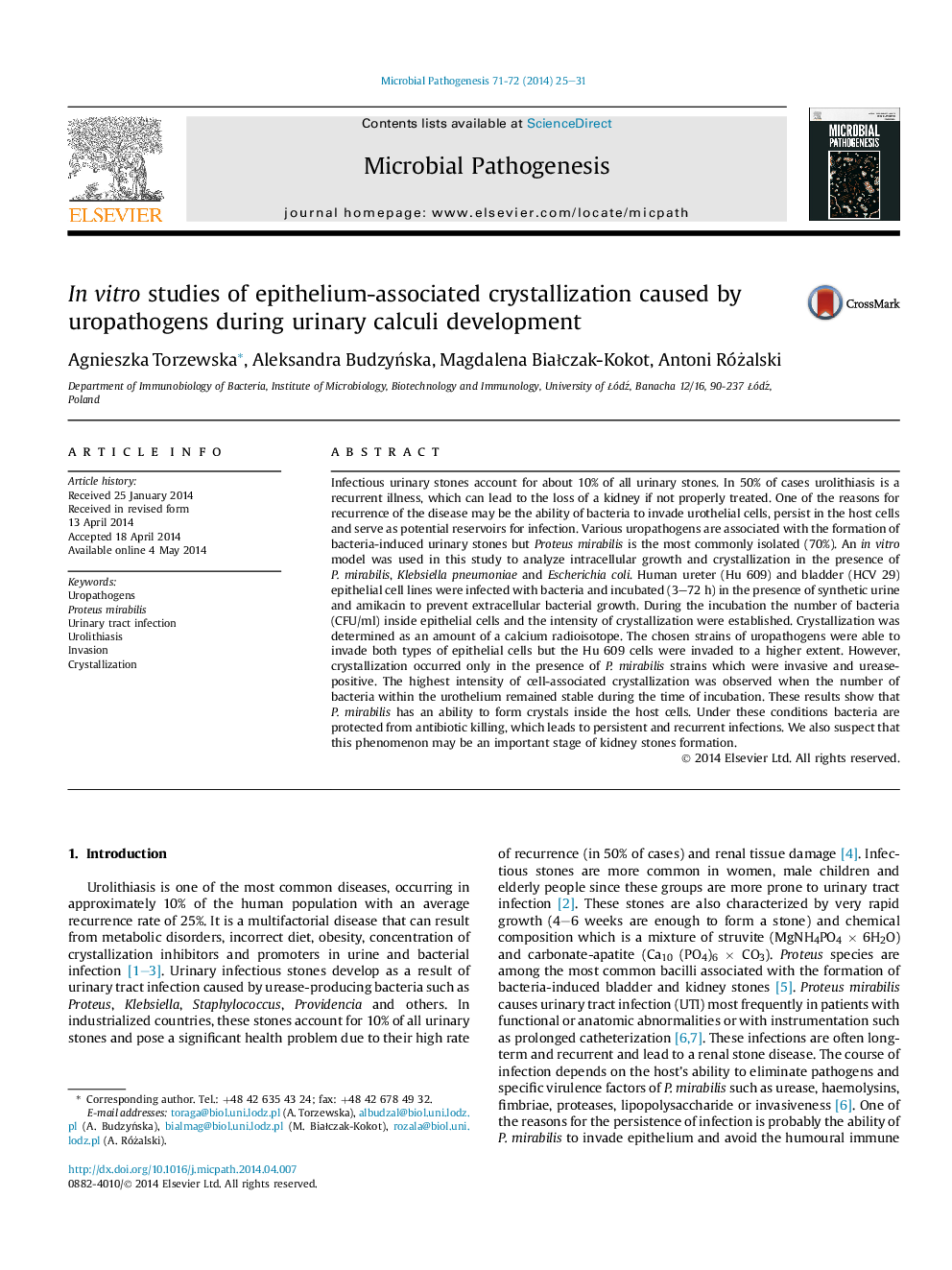| Article ID | Journal | Published Year | Pages | File Type |
|---|---|---|---|---|
| 3416576 | Microbial Pathogenesis | 2014 | 7 Pages |
•Bacteria-induced crystallization depends on the intensity of bacteria invasiveness and their efficiently of urea degradation.•Crystallization takes place most powerful by when the bacteria are urease-positive and survive inside cells for a long time.•P. mirabilis in contrast to E. coli and K. pneumoniae can induce intra and extracellular crystallization.
Infectious urinary stones account for about 10% of all urinary stones. In 50% of cases urolithiasis is a recurrent illness, which can lead to the loss of a kidney if not properly treated. One of the reasons for recurrence of the disease may be the ability of bacteria to invade urothelial cells, persist in the host cells and serve as potential reservoirs for infection. Various uropathogens are associated with the formation of bacteria-induced urinary stones but Proteus mirabilis is the most commonly isolated (70%). An in vitro model was used in this study to analyze intracellular growth and crystallization in the presence of P. mirabilis, Klebsiella pneumoniae and Escherichia coli. Human ureter (Hu 609) and bladder (HCV 29) epithelial cell lines were infected with bacteria and incubated (3–72 h) in the presence of synthetic urine and amikacin to prevent extracellular bacterial growth. During the incubation the number of bacteria (CFU/ml) inside epithelial cells and the intensity of crystallization were established. Crystallization was determined as an amount of a calcium radioisotope. The chosen strains of uropathogens were able to invade both types of epithelial cells but the Hu 609 cells were invaded to a higher extent. However, crystallization occurred only in the presence of P. mirabilis strains which were invasive and urease-positive. The highest intensity of cell-associated crystallization was observed when the number of bacteria within the urothelium remained stable during the time of incubation. These results show that P. mirabilis has an ability to form crystals inside the host cells. Under these conditions bacteria are protected from antibiotic killing, which leads to persistent and recurrent infections. We also suspect that this phenomenon may be an important stage of kidney stones formation.
